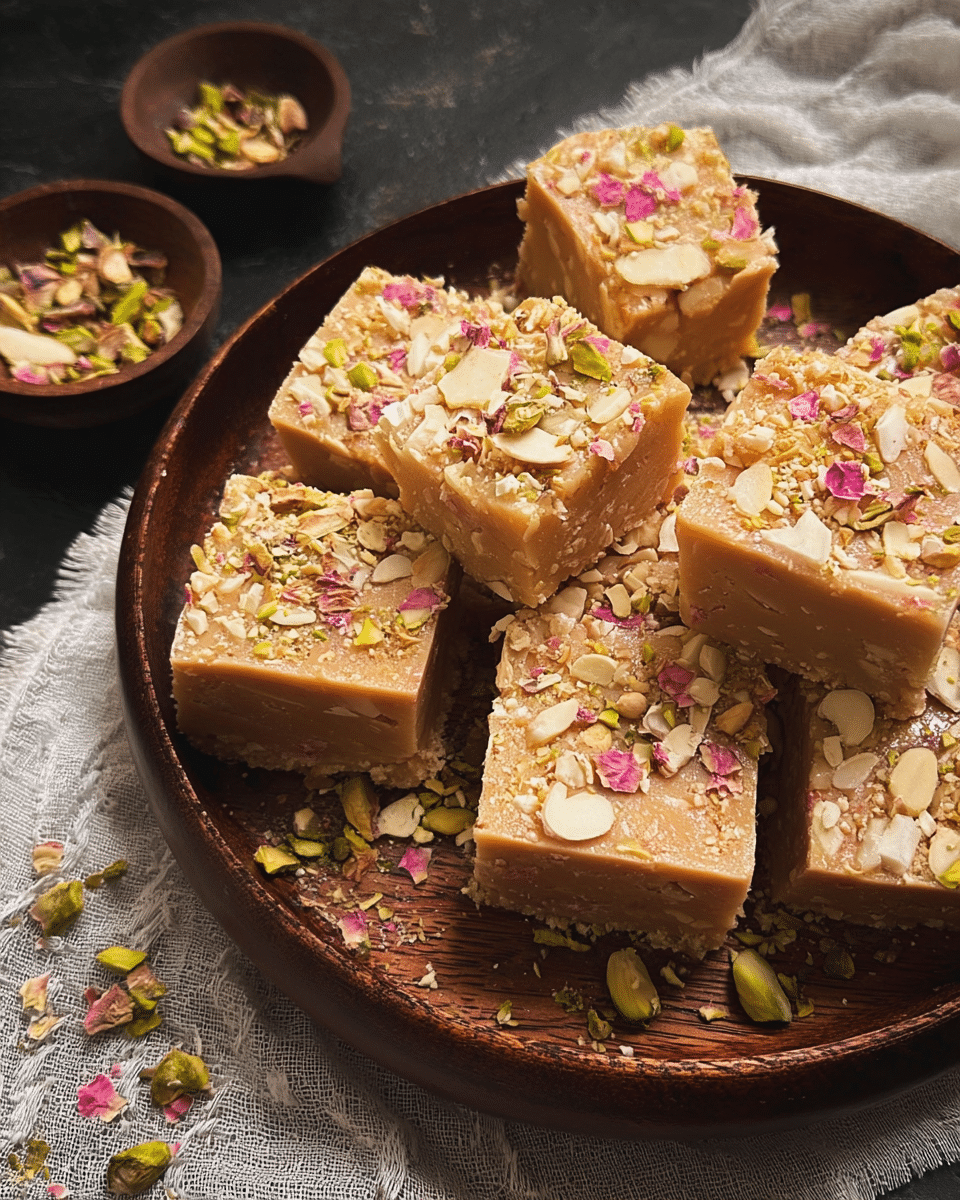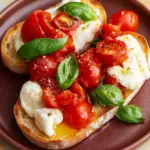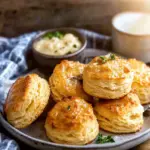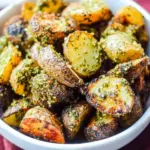The melt-in-your-mouth goodness of Mohanthal is something every Indian home treasures during the festival season. Originating from Gujarat and Rajasthan, this grainy, fudgy sweet made from roasted besan, rich ghee, sugar syrup, and cardamom is a divine delicacy often offered as prasad. It’s more than just a sweet—it’s tradition served on a plate.
Perfect for Diwali, Janmashtami, or any auspicious occasion, Mohanthal is an aromatic delight that carries cultural significance and nostalgia in every bite. Its deep golden color, fragrant cardamom, and garnished nuts make it visually stunning and soul-satisfyingly rich. A perfect homemade treat to share with loved ones.
Full recipe:
Ingredients:
-
2 cups Besan (chickpea flour/gram flour)
-
1 cup Ghee
-
½ cup Milk
-
1 cup Sugar
-
½ cup Water
-
½ tsp Cardamom Powder
-
1–2 tbsp chopped Mixed Nuts (almonds and pistachios)
Directions:
-
Heat 3 tbsp of ghee and 3 tbsp of milk together until warm. Mix into the besan in a large bowl using your hands. Cover and let rest for 10–15 minutes.
-
After resting, sieve the besan mixture to get a grainy texture.
-
Heat the remaining ghee in a heavy-bottomed pan, then add the sieved besan. Stir and roast over low flame.
-
Roast for 10–15 minutes, stirring continuously until the mixture becomes frothy and golden brown.
-
Add milk in batches (2 tbsp at a time) while roasting to create a granular, frothy texture. Continue until all milk is used and absorbed. Turn off the heat and let the mixture cool slightly.
-
In another pan, heat sugar and water together until sugar dissolves. Cook to 1-string consistency (1.5-string in hot climates). Add cardamom powder and allow to cool for 2–4 minutes.
-
Add the sugar syrup to the warm besan mixture. Mix thoroughly.
-
Transfer immediately to a greased tray. Sprinkle nuts on top and press gently.
-
Let it set for 2–8 hours depending on room temperature. Cut into squares and store in an airtight container.
Prep Time: 20 minutes
Cooking Time: 30 minutes
Total Time: 50 minutes
Kcal: Approx. 275 kcal per piece
Servings: 16 pieces
A Legacy Passed Down Through Generations
Families across Gujarat and Rajasthan hold age-old recipes for Mohanthal that are passed down through generations, often handwritten in grandma’s cookbooks or passed on orally. It’s one of those dishes that mothers and grandmothers lovingly prepare during special occasions, teaching younger generations not just how to make it, but also sharing the meaning and rituals associated with it. The process of making Mohanthal is considered sacred and demands patience, precision, and dedication. Every household may have its slight variation—some use coarse besan for a gritty texture, others use mawa for richness—but the essence remains the same.
Texture, Flavor, and Aroma – The Hallmarks of Mohanthal
What makes Mohanthal so beloved is its unmistakable grainy texture, rich flavor, and captivating aroma. The dish is defined by its slow-roasted chickpea flour (besan), which is lovingly stirred in ghee until it reaches a golden-brown hue and emits a nutty, toasty fragrance. This roasting process is crucial, as it creates the base flavor that makes Mohanthal stand out among other Indian sweets. When mixed with a sugar syrup infused with cardamom, and occasionally topped with slivers of almonds and pistachios, the result is a melt-in-your-mouth treat that feels both decadent and nostalgic.
Why Mohanthal is a Festive Essential
During Diwali or Janmashtami, no thali (platter) feels complete without a piece of Mohanthal. It’s symbolic of abundance and sweetness—qualities that festivals aim to invoke in life. Its preparation, though intricate, is part of the festive ritual itself. Roasting the besan slowly, preparing the syrup to perfect string consistency, and watching the ghee rise to the top as it sets—each step is an act of mindfulness and celebration. In temples, Mohanthal is often part of the Chhappan Bhog (a 56-item offering), underscoring its sacred status in Hindu traditions.
Nutritional Perspective and Ingredients Harmony
From a nutritional perspective, Mohanthal offers both indulgence and sustenance. Chickpea flour is rich in protein and fiber, while ghee, though high in fat, is a traditional Indian superfood known for aiding digestion when consumed in moderation. The use of milk adds creaminess and helps in forming the desired texture. Cardamom not only adds fragrance but also brings in antioxidant properties. The nuts add healthy fats and crunch, creating a balanced interplay between soft, gritty, and crunchy textures in one small square of sweetness.
Regional Variations and Modern Twists
Though Gujarati and Rajasthani styles dominate traditional recipes, variations of Mohanthal exist across India. Some versions incorporate mawa (khoya) to enhance richness, while others substitute jaggery for sugar to offer a rustic, earthy sweetness. Urban kitchens and modern chefs have even started experimenting with vegan ghee, coconut milk, or even chocolate infusions to reimagine Mohanthal for contemporary palates without losing its identity. These modern adaptations, while innovative, still pay homage to the base ingredients and cooking philosophy of the original recipe.
Common Mistakes and How to Avoid Them
One of the most common errors in making Mohanthal is overcooking the sugar syrup, which can lead to a hard, brittle texture rather than the desired soft and grainy consistency. Another common mistake is roasting the besan at high heat, which can cause it to brown quickly on the outside while leaving the inside raw, resulting in a bitter or uneven taste. Additionally, skipping the sieving process after dhaba (where besan is mixed with ghee and milk) often compromises the granular texture that defines Mohanthal. Taking the time to follow these traditional steps with patience is key to achieving a successful result.
Storage and Shelf Life
One of the many reasons Mohanthal continues to be a festive favorite is its excellent shelf life. When stored in an airtight container at room temperature, it can last up to 15 days without refrigeration, making it an ideal sweet for gifting, travel, or long celebrations. In fact, many Indian households prepare large batches of Mohanthal during festival weeks, ensuring that a sweet bite is always within arm’s reach for guests and family members.
Mohanthal as a Gift of Love
In Indian culture, food is often seen as a form of love and expression, and sweets like Mohanthal epitomize this belief. During Diwali, it is customary to gift homemade sweets to friends, relatives, and neighbors. Mohanthal, with its rich taste and thoughtful preparation, becomes a perfect token of affection. It’s not uncommon to find it wrapped in decorative boxes or tins, sometimes accompanied by other delicacies like kaju katli or soan papdi, creating a rich tapestry of flavor, tradition, and sentiment.
Emotional Connection and Nostalgia
Ask any Gujarati or Rajasthani about Mohanthal, and you’re likely to hear stories of childhood, family kitchens, and festive joy. It’s one of those dishes that creates deep emotional connections—perhaps because it’s not made every day but reserved for special, sacred times. The slow preparation allows time for storytelling, shared laughter, and passing down culinary wisdom. These intangible elements make Mohanthal more than just a dessert—it becomes a cultural heirloom, tied to identity, celebration, and home.
Conclusion: A Dessert That Transcends Time
Mohanthal isn’t just a dish—it’s an experience, a memory, and a celebration of heritage. It brings together the artistry of Indian sweets with the devotion of festive traditions. While modern variations and easy hacks may continue to evolve its presentation, the essence of Mohanthal lies in its slow cooking, patience, and reverence. Whether served as prasad to the divine, shared with guests during a festival, or prepared at home to revive cherished memories, Mohanthal remains a true testament to the soul of Indian culinary tradition.
Its richness lies not just in ghee or sugar, but in the love and tradition infused in every step of its making. To make Mohanthal is to honor a ritual, embrace nostalgia, and share joy—one golden square at a time.






